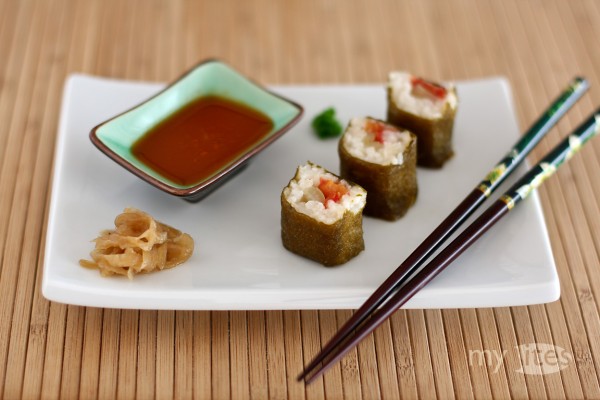Next to experimenting with new flavor pairings and techniques, thinking about classic dishes and transforming them into new and more interesting forms is my biggest passion in cooking. Sometimes I start meditating about a classic dish, its ingredients, the involved techniques and the possibilities behind them. The ideas pop up and evolve during this creative process. Some other times I keep thinking and enhancing distinct single ideas, which I quite suddenly assemble into a new dish or a reinterpretation of a classic. This time I combined several ideas and applied it to a Hungarian classic: the lecho (orignally: lecsó). Traditionally lecsó is a mix of onions, long bell peppers and onions simmered similarly to a stew and served either immediately or stored in glasses for the forthcoming winter. Sometimes lecsó is enhanced with garlic, Hungarian sausage (kolbász), sweet paprika powder or lard. Lecsó is usually served mixed with rice or eggs, or it can be eaten simply with a few slices of bread. I prefer the version with rice and – very nontraditionally – a lot of cinnamon, which works especially well with chorizo-like sausages.
You might ask now: why to serve a lecsó in form of a sushi? Well, I figured out how to make endless variations of nori algae sheet substitutes (the sheets you wrap your sushi into), how the texture of tomatoes and peppers can resemble soft fish meat and how to replace the wasabi by another traditional Hungarian ingredient. With the combination of the ideas described below, serving a sushi with lecsó flavor surely will make sense to you as well. So read on below for the birth story of the Lechosushi.
Sushi is always wrapped in nori sheets made from pressed and dried algae. But why don’t those sheets fall apart into single algae leaves? I suppose the secret lies in the high agar content of the algae. Agar is used for gelification and also helps to hold thin sheets together. Thinking about fruits and vegetables, they naturally contain a similar gelling agent. Thanks to the pectin content, jams made from fruits form a gel. Paté de fruits or fruit leathers are also bound together by the pectin. My idea was to adapt the technique for fruit leathers to vegetables – in this dish for green tomatoes and bell peppers, which also contain some pectin – and create thin sheets for wrapping sushi in them. The result was marvelous. The dried thin vegetable sheet resembled all features of the classic nori sheets, but with a different flavor. Just imagine the endless number of combinations and new possibilities for sushi-wraps!
Another idea I used for the lechosushi were the texture of tomatoes and bell peppers. Half-dried tomatoes develop a similar consistency to soft meat and can be used perfectly for vegan tartars, which actually fool a lot of meat-eaters. Baked bell pepper not only develops a rich flavor, but also gets a slightly meaty texture. Both combined yield the flavor profile of a lecsó. So in the end it was self-evident to use half-dried tomatoes and baked peppers as the filling for the newly developed lechosushi.
Above I mentioned, that I prefer my lecsó with rice. Since rice is a main ingredient for sushi, it was straightforward to use it in the lechosushi as well. I used less rice vinegar for the rice compared to traditional sushi recipes, because I didn’t have to balance the fattiness of the fish. Instead I replaced some of the vinegar by a reduced lecsó stock, which I cooked from all the leftovers from the half-dried tomatoes and peppers (such as skins, seeds and pulps). I also tried to substitute the traditional accompaniments of sushi by replacing the wasabi with a hot green pepper paste and by changing the ginger to onion marmalade. For the soy sauce I experimented with a deep brown onion sauce, but dropped it in the end, because it took the sushi into a different direction. Instead, I cooked a lecsó soup and reduced it to a slightly thick sauce, which enhanced the lecsó flavor even more.
If you would like to taste this quite original and unique appetizer, come to Budapest on the 8th of September this year. The Hungarian Dining Guide invited me to their annual Blogger Tasting, where I’ll be serving these lechosushi along with Noémi from Almond Corner, who will prepare a classic Hungarian dessert in a different and new form. We’ll be behind the counter from 3 to 6pm on the 8th of September. The tasting will be held in conjunction with a 3-day-long street food show at the marketplace in the Hold street (Budapest, Hungary), where you can taste a lot of different specialties as well. So if you will be around, I’d be happy to see and meet you there!
[amd-zlrecipe-recipe:68]

Wow! this is inspired cooking at its best – and I can very well follow this “process” – sometimes I do dream at night about creating new recipes because they keep me thinking for hours during the day—- This is cooking with a smile, with esprit – adore it!!! Thank you again for the inspiration and I am truly happy for having found this blog. Best wishes from a very hot kitchen! 😉
Thank you, Angelika! Sometimes you just forget about an idea and it suddenly pops up in the right moment when pondering about a different recipe. These creative processes are so wonderful: it’s so much fun to create something new – and even more relieving if it turns out really great.